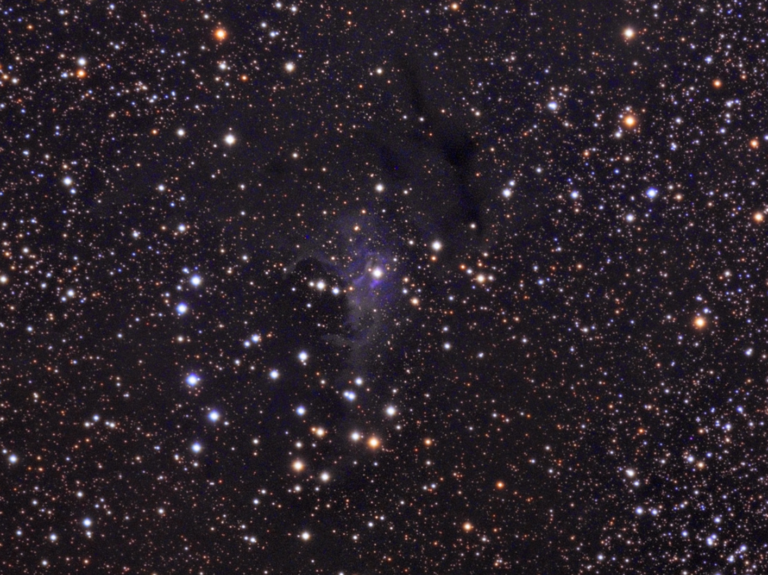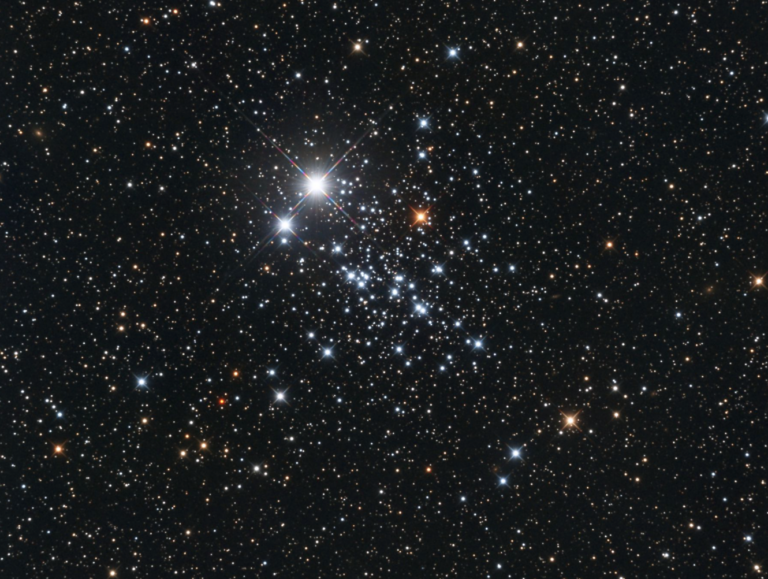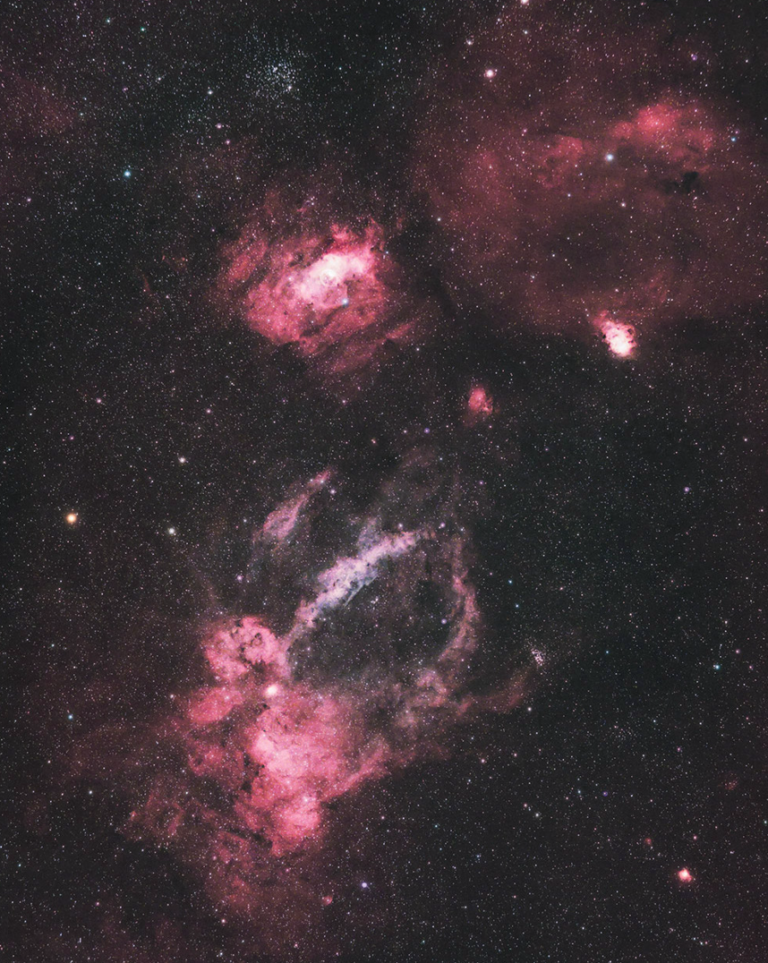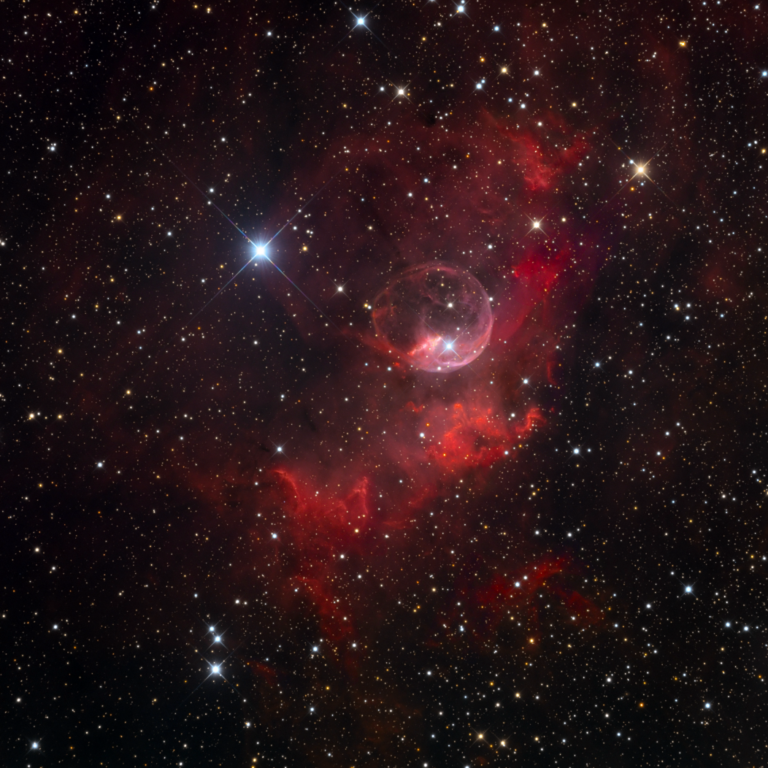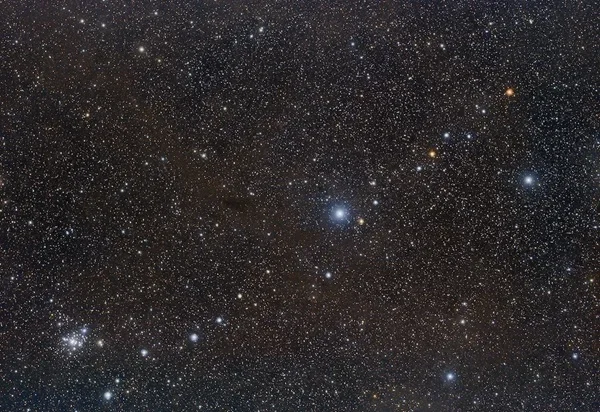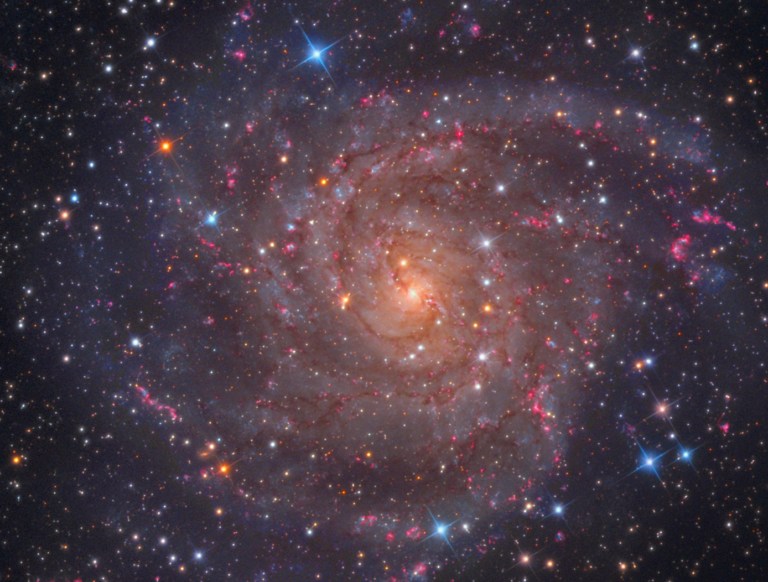
One of the most prized telescopic dark nebulae is the Horsehead Nebula in Orion. Its widespread popularity comes from photographic images, not its visual impact at the eyepiece. This magnificent celestial bust of a horse’s head — like a knight chess piece — is one of the most challenging objects of its kind, especially owing to its diminutive size (5′) and low-contrast surroundings.
Scottish astronomer Williamina Fleming discovered the Horsehead Nebula in 1888 while scanning photographic plates at Harvard College Observatory. Edward Emerson Barnard, who imaged it in 1913, said, “This object has not received the attention it deserves,” and listed it as his 33rd object in his catalog of dark nebulae. The nebula has ever since been known as Barnard 33 (B33), which, unfortunately, like the dark cloud that it designates, obscures the light of Fleming’s find.
We see the dark Horsehead Nebula only because it stands out against the diffuse glow of emission nebula IC 434. Both objects belong to the Orion B molecular cloud, which is one of the largest star-forming regions near our Sun, some 1,300 light-years distant. The Horsehead itself measures some 4 light-years tall and 3 light-years wide, and is part of a larger cosmic landscape hundreds of light-years across that includes the Great Orion Nebula (see #19). If we could sweep away the dense dust covering the Horsehead, we’d find untold stars on the verge of being born.
To find the Horsehead, first locate IC 434. This long reef of dim nebulosity runs for more than 1° southeast of Alnitak (Zeta [ζ] Orionis), the easternmost star in Orion’s Belt. Search for a tiny notch of darkness halfway down the sharp and straight eastern fringe of IC 434. Its appearance in small telescopes is one that looks more like a faded thumbprint than a horse’s head. Low power helps to concentrate IC 434’s glow, which increases contrast and aids in finding the dark notch. The nebula has been spied through telescopes as small as 4 inches and has even been seen through handheld binoculars using an H-beta filter.
Make sure to explore Astronomy’s full list of 101 cosmic objects you must see. New entries will be added each week throughout 2022.
To get the latest astronomical news and observing content delivered directly to your door, subscribe to Astronomy magazine today!



